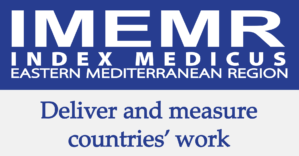Guillain-Barre Syndrome, Clinical Spectrum and Electrophysiological Sub Types: A Local Experience
DOI:
https://doi.org/10.53685/jshmdc.v4i1.150Keywords:
Guillain-Barre syndrome, Acute motor axonal neuropathy, Acute motor sensory axonal neuropathy, Acute inflammatory demyelinating polyradiculo-neuropathy, Acute sensory axonal neuropathy, Electro diagnosticAbstract
Background: Guillain-Barre syndrome is uncommon neurological disease that occurs in acute phase as generalized polyradiculo-neuropathy. It has multiple variants some of them being uncommon and rarely encountered.
Objective: The objective of the study was to determine the frequency and clinical characteristics of Guillain-Barre syndrome variants.
Methods: A cross-sectional study was carried out in neurology department, Mayo hospital from July to December 2022. Patients clinically diagnosed as Guillain-Barre syndrome by using Brighton criteria were included. All the patients underwent electro diagnostic procedures and they were categorized into five basic variants i.e., Acute motor axonal neuropathy, Acute motor sensory axonal neuropathy, acute inflammatory demyelinating polyradiculo-neuropathy, acute sensory axonal neuropathy and mixed variety acute polyradiculo-neuropathy.
Results: Out of total 85 patients, males were 56 (65.9%) and 29 (34.1%) were females. Adults were more affected with a mean age of 36±15.3. Frequency of acute motor axonal neuropathy (35.3%) was high followed by acute motor sensory axonal neuropathy (31.8%), mixed variety acute polyradiculo-neuropathy (16.5%), acute inflammatory demyelinating polyradiculo-neuropathy (12.9%) and acute sensory axonal neuropathy (3.5%) respectively.
Conclusion: Acute motor axonal neuropathy is frequently encountered Guillain-Barre syndrome variant in our setup. Also, the frequency of acute sensory axonal neuropathy and mixed variety acute polyradiculo-neuropathy has increased with a declining trend of acute inflammatory demyelinating polyradiculo-neuropathy.
References
Dimachkie MM, Barohn RJ. Guillain-Barré syndrome and variants. Neurol Clin. 2013; 31(2): 491–510.doi:10.1016/j.ncl.2013.01.005 DOI: https://doi.org/10.1016/j.ncl.2013.01.005
Giacomini PS. Electromyography and Neuromuscular Disorders: Clinical Electrophysiologic Correlations. Mcgill J Med. 2006; 9(2): 173. DOI: https://doi.org/10.26443/mjm.v9i2.669
Fokke C, Van den Berg B, Drenthen J, Walgaard C, Van Doorn PA, Jacobs BC. Diagnosis of Guillain-Barré syndrome and validation of brighton criteria. Brain. 2014; 137(1): 33-43. doi:10.1093/brain/awt285 DOI: https://doi.org/10.1093/brain/awt285
Bölükbaşi F, Ersen G, Gündüz A, Karaali-Savrun F, Yazici S, Uzun N, et al. Guillain-Barré Syndrome and Its Variants: Clinical Course and Prognostic Factors. Noro Psikiyatr Ars. 2019; 56(1): 71-74. doi:10.5 152/npa.2017.18091.
Levin KH. Variants and mimics of Guillain Barré syndrome.Variants and mimics of Guillain Barré syndrome. The Neurologist. 2004; 10(2): 61-74. doi:10.1097/01.nrl.0000 117821.35196.0b DOI: https://doi.org/10.1097/01.nrl.0000117821.35196.0b
Arends S, Drenthen J, Van den Bergh P, Franssen H, Hadden RDM, Islam B, et al. Electrodiagnosis of Guillain-Barre syndrome in the International GBS Outcome Study: Differences in methods and reference values. Clin Neurophysiol. 2022; 138: 231-240. doi:10.1016/j.clinph.2021.12.014. DOI: https://doi.org/10.1016/j.clinph.2021.12.014
Khan MW, Hussain A, Zeeshan HM. Electrophysiological Variants of Guillain Barre Syndrome (GBS). Med.Forum. 2020; 31(12): 20208.
Yadegari S, Nafissi S, Kazemi NJIjon. Comparison of electrophysiological findings in axonal and demyelinating Guillain-Barre syndrome. Iran J Neurol. 2014; 13(3):138-143.
Zaheer M, Naeem M, Nasrullah M. Electrophysiological pattern of neuropathy in Guillain-Barre syndrome. Ann King Edward Med coll.2006;12(4).doi:10.2164 9/akemu.v 12i4.961
Shafqat S, Khealani BA, Awan F, Abedin SE. Guillain-Barre syndrome in Pakistan: similarity of demyelinating and axonal variants. Eur J Neurol. 2006; 13(6):662–665. doi:10.1111/j.1468-1331.2006.01071.x DOI: https://doi.org/10.1111/j.1468-1331.2006.01071.x
Tian J, Liu X, Zhang K, Cao C, Li T, Li P, et al Electrophysiological subtypes and prognostic factors of Guillain-Barre Syndrome in northern China. Frontiers in Neurol. 2019; 10:714.doi:10.3389/fneur.2019.00714 DOI: https://doi.org/10.3389/fneur.2019.00714
Yadav S, Jain P, Sharma S, Kumar V, Aneja S. Guillain–Barre syndrome in North Indian children: Clinical and serial electrophysiological features. Neurol Ind 2019; 67: 724-727. doi:10.4103/0028-3886. 263191 DOI: https://doi.org/10.4103/0028-3886.263191
Hughes RA, Cornblath DR. Guillain-barre syndrome. The Lancet 2005; 366(9497): 1653-1666. doi:10.1016/S0140-6736(05)676 65-9 DOI: https://doi.org/10.1016/S0140-6736(05)67665-9
Ho TW, Mishu B, Li CN, et al. Guillain Barre syndrome in Northern China. Relationship to Campylobacter jejuni infection and anti-glycolipid antibodies. Brain 1995; 118: 597-605. doi:10.1093/brain/118.3.597 DOI: https://doi.org/10.1093/brain/118.3.597
Bano S, Sardar Z, Ahmar M, Liaquat S, Shafiq B, Numan A. Clinical spectrum and outcome of guillain-barré syndrome with plasmapheresis. Indian J Med Spec. 2022; 13(4): 226. doi:10.4103/Injms.injms_50_2 DOI: https://doi.org/10.4103/injms.injms_50_22
Nagasawa K, Kuwabara S, Misawa S, Fujii K, Tanabe Y, Yuki N, et al. Electrophysiological subtypes and prognosis of childhood Guillain Barre syndrome in Japan. Muscle Nerve 2006; 33(6): 766–770. doi:10.1002/mus.20520 DOI: https://doi.org/10.1002/mus.20520
Devos D, Magot A, Perrier-Boeswillwald J, Fayet G, Leclair-Visonneau L, Ollivier Y, et al. Guillain-Barré syndrome during childhood: Particular clinical and electrophysiological features. Muscle Nerve 2013; 48: 247-251. doi: 10.1002/mu s.23749 DOI: https://doi.org/10.1002/mus.23749
Bae JS, Yuki N, Kuwabara S, Kim JK, Vucic S, Lin CS, Kiernan MC. Guillain–barré syndrome in asia. J. Neurol. Neurosurg. Psychiatry. 2014; 85(8): 907-913. doi:10.113 6/jnnp-2013-306212 DOI: https://doi.org/10.1136/jnnp-2013-306212
Kofahi R, Aldabbour B, Aljezawi ME. A Rare Case with New Insights: Pure Sensory Guillain Barre Syndrome with Axonal Features. Int Med Case Rep J. 2020: 543-549. doi:10.2147/IMC RJ.S280255 DOI: https://doi.org/10.2147/IMCRJ.S280255
Siddiqui M, Majid S, Yusuf H, Mateen F. Electrophysiological pattern and predictors of functional outcome of patients with guillain barre syndrome at a tertiary care hospital in Pakistan. J Coll Physicians Surg Pak. 2022; 32(3): 364-368. doi:10.29271/jcps p.2022.03.364 DOI: https://doi.org/10.29271/jcpsp.2022.03.364
Ayaz ul Haq M, Nabi D, Khan MO, Ullah R, Junaid M, Nasarullah HM. Frequency, age, gender distribution, and seasonal variation of Guillain-Barré syndrome in a Province of Pakistan: A Retrospective Study: Prevalence of Guillain-Barre Syndrome. PJMHS. 2023: 207-210. doi:10.5 4393/pjhs.v4i03.565 DOI: https://doi.org/10.54393/pjhs.v4i03.565
Downloads
Published
How to Cite
Issue
Section
License
Copyright (c) 2023 Faryal Shamim, Safia bano safia, Masooma Waqar, Ahsan Numan

This work is licensed under a Creative Commons Attribution-NonCommercial 4.0 International License.
You are free to:
- Share — copy and redistribute the material in any medium or format
- Adapt — remix, transform, and build upon the material
- The licensor cannot revoke these freedoms as long as you follow the license terms.
Under the following terms:
-
Attribution — You must give appropriate credit, provide a link to the license, and indicate if changes were made. You may do so in any reasonable manner, but not in any way that suggests the licensor endorses you or your use.
-
Non Commercial — You may not use the material for commercial purposes.
-
No additional restrictions — You may not apply legal terms or technological measures that legally restrict others from doing anything the license permits.




















